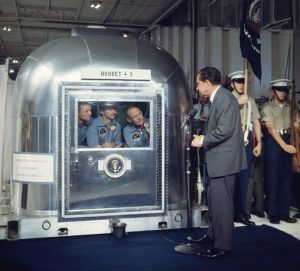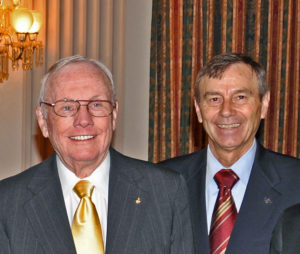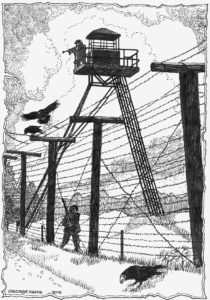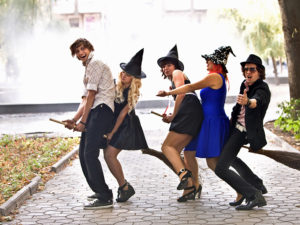A major motion picture will soon be playing in theaters nationwide called First Man. It is a biopic about Apollo 11 astronaut Neil Armstrong, the first human to walk on the moon. Teenage heart throb Ryan Gosling plays the role of Neil, and early movie critic evaluations indicate he did a reasonably good job of it.
For those of us who were alive in 1969, the name Neil Armstrong has a particularly poignant cache. We’d gone through the turmoil of 1968 with its political assassinations, race riots, a huge federal debt, and a nation divided about the war in Vietnam. But, we were winning the great “space race to the moon” against the Soviet Union! It was a truly bright light in an otherwise bleak environment. Americans had a great sense of pride in watching NASA send humans on space missions longer and farther than ever before.
In January, 1969, Richard Nixon became president of the United States. Whether his legacy will eventually transcend the Watergate debacle is unknown, but one image from a single moment in his life will always be indelibly etched in human consciousness. He was the Commander in Chief when the United States fulfilled President John Kennedy’s 1961 challenge to “land a man on the moon and return him safely to the earth.” That man was Neil Armstrong.
President Nixon was onboard the recovery ship USS Hornet when the Apollo 11 spacecraft (Columbia) splashed down in the central Pacific Ocean early in the morning of July 24, 1969 and bent the arc of human history. The President’s banter with the astronauts in their quarantine facility was broadcast worldwide on live TV and eagerly watched by 500 million earthlings.
I was once told by Admiral Charles B. Larson, Nixon’s White House Naval Attaché at that time, that it was the happiest hour of Nixon’s entire presidency. The President, a naval officer who served in the South Pacific during WWII, was ecstatic at being onboard a Navy ship at sea, smelling the salt air, chatting with the sailors, and participating in one of the greatest scientific achievements in history.
But, let’s get back to Neil Armstrong. I was writing a book in 2008 about the splashdown and recovery of Apollo 11 entitled Hornet Plus Three. This was a motto created by the Hornet’s commanding officer, Captain Carl Seiberlich. He wanted the entire ship’s complement, plus three astronauts, to return safely to Pearl Harbor, echoing JFK’s 1961 challenge.
Now, media critics claim Neil was “aloof” and “unresponsive” to their inquiries. But I emailed him anyway about a technical flight issue. NASA had always said the rocket (S-IVB for those who care) that placed the Apollo 11 command module into lunar orbit was fired over Australia. I was able to prove, beyond a shadow of doubt, that it was fired over the Marshall Islands in the South Pacific.
Neil was enthralled at this discovery. At heart, he was true mid-westerner who loved the challenge of solving problems and coming up with new solutions. He emailed me back, said my information was a true revelation and asked if I needed any help with my book. He felt the Navy’s side of the Apollo 11 recovery program had never been adequately told and wanted the record set straight.
Whether flying US Navy jets in combat missions from the USS Essex over Korea (78 times), or being a test pilot for the X-15 flying at Mach 3 in Southern California, or trying to salvage the Gemini 8 flight after a sudden and dangerous spacecraft malfunction, Neil always lived “in the moment” when flying, solving complex problems in just seconds. The USAF calls this decision making process an OODA loop – observe, orient, decide and act. Danville’s own Sully Sullenberger and Neil Armstrong share some common DNA when it comes to OODA!
Neil and I had several candid conversations and email exchanges over a six year period before he passed away. Once, I asked him about the moment when the guidance computer in the lunar module Eagle became overloaded shortly before they would have landed on the moon. The LM was running very low on fuel, with less than a minute left until mission abort. Worse, Neil could see boulders and craters dotting the area where the LM was headed. Neil decisively took manual control of the spacecraft, which he had never piloted before, extended the “runway” beyond the boulder field and set it down gently. He told me it was no big deal; that landing a Navy fighter jet at 125mph on an aircraft carrier at sea was far more intense!
Beginning with his walk on the moon, the world media elevated him to super hero status. He had to cope with the curse of worldwide fame for the rest of his life. He could have cashed in and made a fortune from it, but didn’t. In reality, he was a salt-of-the-earth human, with strong mid-western values, who was passionate about flying. He never failed to mention that 400,000 NASA employees and contractors made it possible for him to take that “one small step for a man” onto the moon’s surface.
I have been privileged to see this humility up close. Because of the Apollo 11 exhibit at the USS Hornet Museum, and my book Hornet Plus Three, Neil requested my wife and I to join members of the Apollo 11 recovery team at the Congressional Gold Medal ceremony in November of 2011 at our nations’ Capitol in Washington, DC.
I have not seen the movie First Man. But if it comes close to reflecting the true character of Neil Armstrong, it should be an Academy Award winner.




